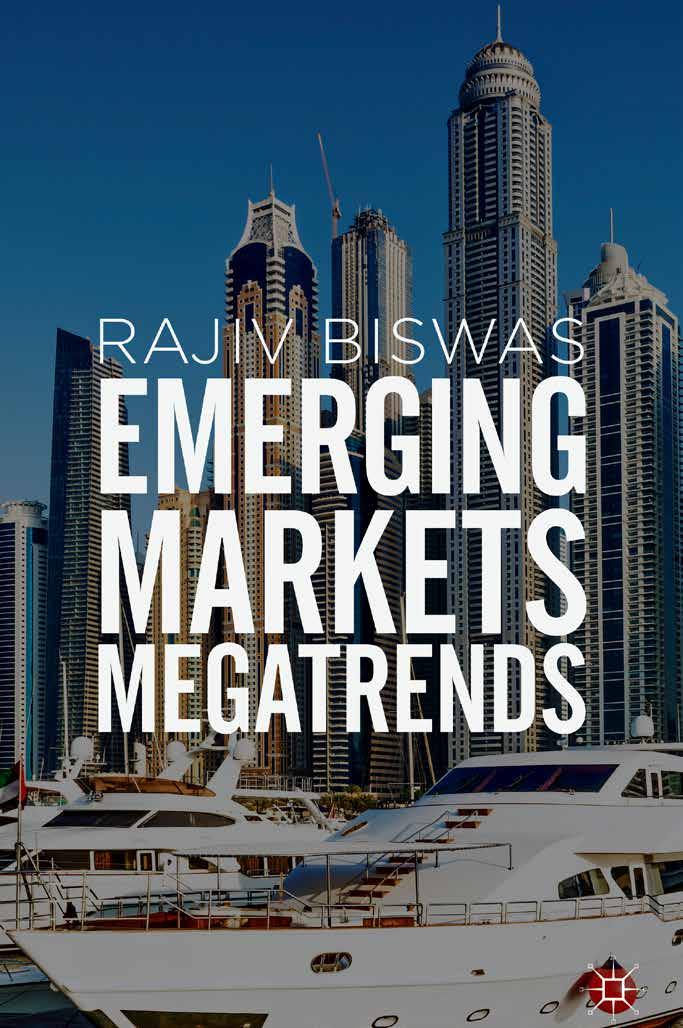
15 minute read
Synthetic Trade Finance: 7 Signs to spot a House of Cards
Advertisement
Synthetic Trade Finance: 7 Signs to spot a House of Cards Synthetic Trade Finance: 7 Signs to spot a House of Cards
Every year or so, a high-profile case involving astronomical losses reminds us of the stark reality of the trading business. Every year or so, a high-profile case involving Underwriters would now be familiar with the cautionary A business that has long moved beyond the pure shipment of goods from producer end user. A business that is now astronomical losses reminds us of the stark reality of highly leveraged on liquidity through the creation of tale of insurance coverage being sought by traders solely synthetic or mirror trade flows. the trading business. A business that has long moved to obtain financing – a means to an end of accessing A business operating on paper documents that lay susceptible to multiple financing. beyond the pure shipment of goods from producer liquidity. Banks take an exceeding amount of comfort if a Statistics will proudly boast that international trade is valued in the trillions of dollars each but how much of this sum is to end user. A business that is now highly leveraged trade is credit insured, treating the policies akin to guar-synthetic is open to debate. Every year, a trading company once driving on liquidity through the creation of synthetic or even antees. Insurers, focussed on the credit assessment of revenues in the billions of dollars, topples over and in the post-mortem, we find a bewildering mirror trade flows. flow of trade documents that have been rolled, flipped or buyers are too far removed from the transaction to unrotated between parties while the underlying goods are long gone. derstand questionable signs in the trade flow. Credit inWhen the trade is deconstructed by specialist lawyers like myself, A business operating on paper documents that lay sus- surance and modern trade finance do not sit neatly with sometimes what emerges from the smoke is a parallel world of synthetic structures, double financing fraudulent documents. ceptible to multiple financing. Statistics will proudly boast each other. And the shrewd trader knows this. Underwriters would n that international trade is valued in the trillions of dollars ow be familiar with the cautionary tale of insurance coverage being sought by traders solely to obtain financing – each year but how much of this sum is synthetic is open With an increasingly connected world wiping out arbia means to an end of accessing liquidity. Banks take an exceeding to debate. Every year, a trading company once driving trage opportunities on price margins, traders have turned amount of comfort if a trade is credit insured, treating the policies akin to guarantees. Insurers, focussed on revenues in the billions of dollars, topples over and in the to synthetic trades to create liquidity. Passing documents the credit assessment of buyers are too far removed from the transaction to understand post-mortem, we find a bewildering flow of trade docu- for an easy margin is just the tip of the incentive, the real questionable signs in the trade flow. Credit insurance and modern trade finance do not sit neatly with ments that have been rolled, flipped or rotated between each other. And the shrewd trader knows this. reward comes with access to financing and hence liquidparties while the underlying goods are long gone. When ity for a 60-90 day period. The trader may leverage such With an increasingly connected world wiping out arbitrage opportunities on price margins, traders have turned to synthetic the trade is deconstructed by specialist lawyers like liquidity for another transaction over a 30-60 day period: trades to create liquidity. Passing documents for an easy margin is just the tip of the myself, sometimes what emerges from the smoke is a the house of cards gets bigger with such circular trades incentive, the real reward comes with access to financing and hence liquidity for a 60-90 period. The trader may parallel world of synthetic structures, double financing or (see: Diagram A). leverage such liquidity for another transaction over a 30-60 day period: the house of cards gets bigger fraudulent documents. with such circular trades (see: Diagram A). In a voyage between West Africa or South America to Asia (which consumes a significant proportion of global
Physical Trade commodities), a trader has several weeks to “roll” its title documents. With a warehouse receipt, the lead time is
A
14 weeks voyage
E months. As long as the title documents are returned before final delivery to its final buyer, no one is the wiser of this synthetic sub-trade. The opportunity and indeed the reward to multiple finance the same cargo, couldn’t be
D Synthetic Trade B greater. Revenue is booked across the string of buyers, banking lines utilized – everyone is a winner in this game of musical chairs. As long as the music keeps playing.
C
But every now and then the music stops because there is a liquidity crunch and the house of cards built on smaller synthetic trades can collapse in spectacular fashion with billions of dollars lost in a short time. In the pursuit Diagram A: Circular Trade of liquidity, synthetic trades makes it difficult to reconcile Diagram A: Circular Trade the document flow with the physical flow which gives rise In a voyage between West Africa or South America to Asia (which consumes a significant proportion of global commodities), a trader has several weeks to “roll” its title documents. With a warehouse
Actual
A Phantom
E
B
C D
Buyer D + Buyer H Related Companies H
G F
Diagram B: Mirror Trade
Diagram B: Mirror Trade
Trade fraud flourishes in an environment where documents are circulated to create liquidity. Having to the perfect conditions for multiple financing. With fake tutional large trading houses or trade finance banks to give analysed trade flows in arbitration cases, there are three aspects of international trade that lend itself title documents, a phantom trade can be created in par- these documents a veneer of legitimacy. It is basic human to trade fraud and which every underwriter (and indeed bank operational staff should know). The first allel to a real trade using the same details of an actual psychology – if a trade involves receiving title documents is that credit positions can be monetized in international trades through the “rolling” of title voyage but with different buyers. By the time, this “mir- through well known trading houses or banks, they must documents. Without a central repository, lenders have no assurance that the cargo has not been ror” trade is detected, the cargo is often untraceable or be legitimate. Financiers and insurers alike take comfort in double financed. Second, title documents like bills of lading continue to exist predominantly in physical consumed leaving different banks to the realisation that the documents coming out of an institution but not enough paper form. A “negotiable” bill of lading often used in trade effectively operates as a blank bearer they have all financed the same cargo. (see: Diagram B) scrutiny is placed on how the documents entered the insticheque as the buyer’s name will be deliberately left empty to facilitate negotiation to any third party. tution in the first place. Inserting a small trading company Physical possession of an original bill of lading should in theory give the holder a right to the goods Trade fraud flourishes in an environment where documents between two large trading houses in a trade flow serves to described on the documents. In practice however, goods can easily be discharged and untraceable are circulated to create liquidity. Having analysed trade flows divert the inquiry away from the source of the documents. even while the bank holds on to an original bill. Third, there needs to be a string of traders with in arbitration cases, there are three aspects of international The smoke and mirrors are now in place. fragmented information gaps. As bills can be manipulated easily, each pair of hands it passes through trade that lend itself to trade fraud and which every underincreases the risk of fraud. Add to that the market practice of using freight forwarders to move cargo, writer (and indeed bank operational staff should know). The Understanding this background is now essential for any who in turn issue their own “house bills”. Now there are multiple bills in play involving the same cargo. first is that credit positions can be monetized in international underwriter in the credit business. Sometimes, the best trades through the “rolling” of title documents. Without a business an underwriter can do is the business that is not central repository, lenders have no assurance that the car- underwritten. With the context that insurance is now bego has not been double financed. Second, title documents ing used as a means of generating liquidity in international like bills of lading continue to exist predominantly in physical trade, the ability to spot a dubious or risky transaction could paper form. A “negotiable” bill of lading often used in trade not be more vital. effectively operates as a blank bearer cheque as the buyer’s name will be deliberately left empty to facilitate negotiation After years of analysing trade flows, here are 7 red flags to to any third party. Physical possession of an original bill of look out for: lading should in theory give the holder a right to the goods described on the documents. In practice however, goods 1. The Conduit Trader can easily be discharged and untraceable even while the Who is the conduit trader? There is no one particular give bank holds on to an original bill. Third, there needs to be away but a combination of signs may suggest a trade is a string of traders with fragmented information gaps. As not in the business of physical cargo. The conduit trader bills can be manipulated easily, each pair of hands it passes is not a product specialist – it may trade steel today and through increases the risk of fraud. Add to that the market oil palm tomorrow and then cashew nuts the day after. It’s practice of using freight forwarders to move cargo, who in spike in revenue in a short period may be telling. It may turn issue their own “house bills”. Now there are multiple claim to trade $100 million tons of coal from Indonesian bills in play involving the same cargo. But the masterstroke when the country only exports $25 million. It will not know comes in channelling fraudulent documents through insti- what type of carrier is needed to carry specific products
or the average voyage time of the trade route. Put simply, it will not know the operational aspects of physical trading which increases the probability of its role being a conduit for shuffling paper documents – a set up that can be done with just a handful of staff and a small office space in the trading hubs of Singapore, Dubai or Switzerland to get access financing.
2. Credit Insurance
Credit insurance serves a critical function in international trade. However, where an insured is unable to convince a bank to finance it without credit insurance, it raises issues on the inherent credibility of the transaction. Credit insurers now have the unenviable task of understanding the transaction beyond just the credit worthiness of the buyer.
3. Unrealistic Margins
It may seem simple enough but in today’s world of trading, if a trader is confident of pulling off unusually big margins or an opportunity for a once in a lifetime undervalued cargo, then perhaps there is some truth in the old adage that if it is too good to be true than it probably isn’t. Traders who borrow at higher interest rates do make we wonder which commodity type is able to generate such margins purely on a price arbitrage.
4. High Sea Sales
High Sea Sales are a common practice of international trade where goods are bought and sold while on the water. Such practices however create challenges to a party seeking to verify the authenticity of the trade as the seller of the cargo is essentially asking a buyer to believe its bills of lading, i.e., the blank cheque, passed to it from another seller is legitimate. Without visibility on the exporter who loaded the cargo onto the vessel, there are too many gaps in the trade chain and no guarantee that the cargo exist or has not already been financed by someone else.
5. Discrepant Documents
I am often approached to determine whether a bill of lading is fake or forged. This is a notoriously difficult task to undertake conclusively but the suite of documents presented for payment contain representations that could and should be tested. For example, a certificate of origin is typically presented alongside the bill of lading. It should state the name of the exporter who in turn would have arranged for customs clearance and possibly shipping of the cargo. This can be verified with the exporter.
6. Transaction Due Diligence
A combination of factors operate in tandem to lull a party into taking its eye off the transaction due diligence. Maybe it’s the pressure of onboarding new business, or the huge margins promised. It could also very well be the phenomenal growth of a trader or that its trading relationship with its counterpart has been existing for years without default. Perhaps with credit insurance coverage in place, there isn’t too much need to scrutinize the transaction itself. This is how suspicious trading structures are onboarded. Why is a small trader placed between two large trading houses that are already in business with each other? Who made the introductions or originated the deal structure? Can each party in the string of trades justify why it is involved in the trade? These questions which I often ask when things go wrong, would be better placed at the due diligence stage of an on-boarding.
7. Copy BLs
Finally, in a world where original bills can be manipulated and forged with relative ease, it surprises me how willing banks and traders are to use copies of bills rather than to insist on the originals. Copy bills are an easy but risky solution where original bills cannot be couriered to the numerous parties in the chain on time. The obvious refrain is trust – parties trust that a trader that presents a copy bill will back
ARTICLE | April 2020 | The ICISA INSIDER I am often approached to determine whether a bill of lading is fake or forged. This is a notoriously difficult task to undertake conclusively but the suite of documents presented for payment contain representations that could and should be tested. For example, a certificate of origin is typically presented alongside the bill of lading. It should state the name of the exporter who in turn would have arranged for customs clearance and possibly shipping of the cargo. This can be v Catalogue of Credit erified with the exporter. Insurance Terminology
Transaction Due Diligence
A combination of factors operate in tandem to lull a party into taking its eye off the transaction due diligence. Maybe it’s the pressure of onboarding new business, or the huge margins promised. It co also very well be the phenomenal growth of a trader or that its trading relationship with its it. So the world’s largest trading houses and banks routinely funnel copy bills in their systems from their trusted counterparts. The problem is that few have stopped to ponder if counterpart has been existing for years without default. Perhaps with credit insurance coverage in place, there isn’t too much need to scrutinize the transaction itself. This is how suspicious trading structures are onboarded. Why is a small trader placed between two large trading houses that are The new English edition of the catalogue is available. their institutional counterparts could have also been duped in this merry-go-round of bills. already in business with each other? Who made the introductions or originated the deal structure? It can be downloaded from the Can each party in the string of trades justify why it is involved in the trade? These questions which I ICISA website (www.icisa.org). A house, even that of cards, is not built overnight. Lenders often ask when things go wrong, would be better placed at the due diligence stage of an on To order a hard copy, please -boarding.and insurers typically see their pyramid structure but miss the numerous other pyramids which form the foundation of the house. 7. Copy BLs send an email to secretariat@ icisa.org Finally, in a world where original bills can be manipulated and forged with relative ease, it surprises Baldev Bhinder is the Managing Director of Blackstone & me how willing banks and traders are to use copies of bills rather than to insist on the originals. Copy
Gold LLC, a specialist commodities and international trade law firm in Singapore. bills are an easy but risky solution where original bills cannot be couriered to the numerous parties in the chain on time. The obvious refrain is trust – parties trust that a trader that presents a copy bill will Baldev has worked on numerous international trade arbitrations, trade fraud investigations and credit insurance back it. So the world’s largest trading houses and banks routinely funnel copy bills in their systems disputes and is lauded for his arbitration capabilities by the from their trusted counterparts. The problem is that few have stopped to ponder if their institutional Legal 500, Who’s Who Legal and Benchmark Litigation. counterparts could have also been duped in this merry-go-round of bills. Recently, he held an webinar on the topic, which can be watched here: A house, even that of cards, is not built overnight. Lenders and insurers typically see their pyramid https://www.youtube.com/watch?v=Cgh-71itECsstructure but miss the numerous other pyramids which form the foundation of the house.
You can reach Baldev Bhinder at baldevbhinder@blackstonegold.com
Baldev Bhinder is the Managing Director of Blackstone & Gold LLC, a specialist commodities and international trade law firm in Singapore. CATALOGUE OF CREDIT INSURANCE TERMINOLOGY Baldev has worked on numerous international trade arbitrations, trade fraud investigations and credit insurance disputes and is lauded for his arbitration capabilities by the Legal 500, Who’s Who Legal and Benchmark Litigation.
English edition







